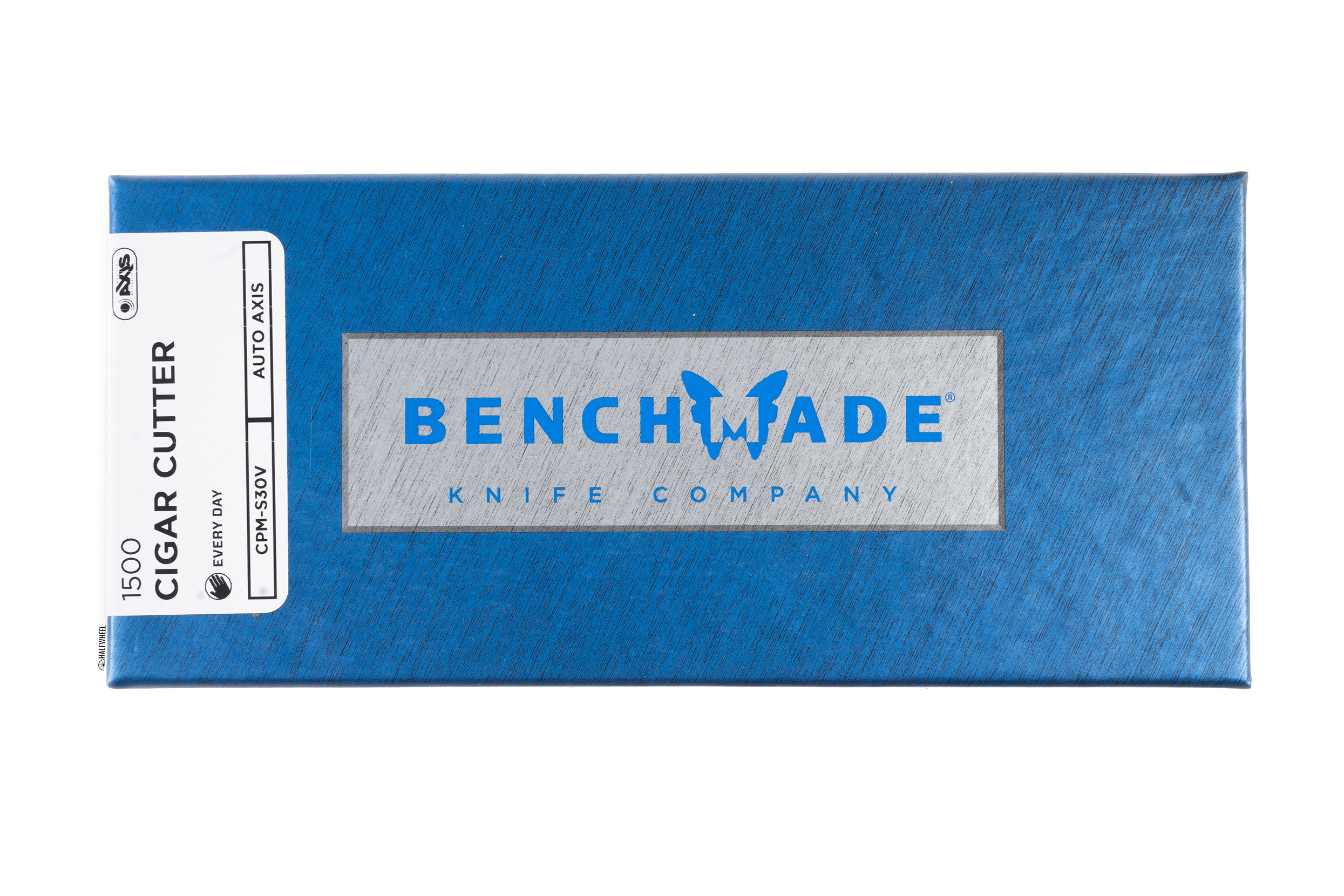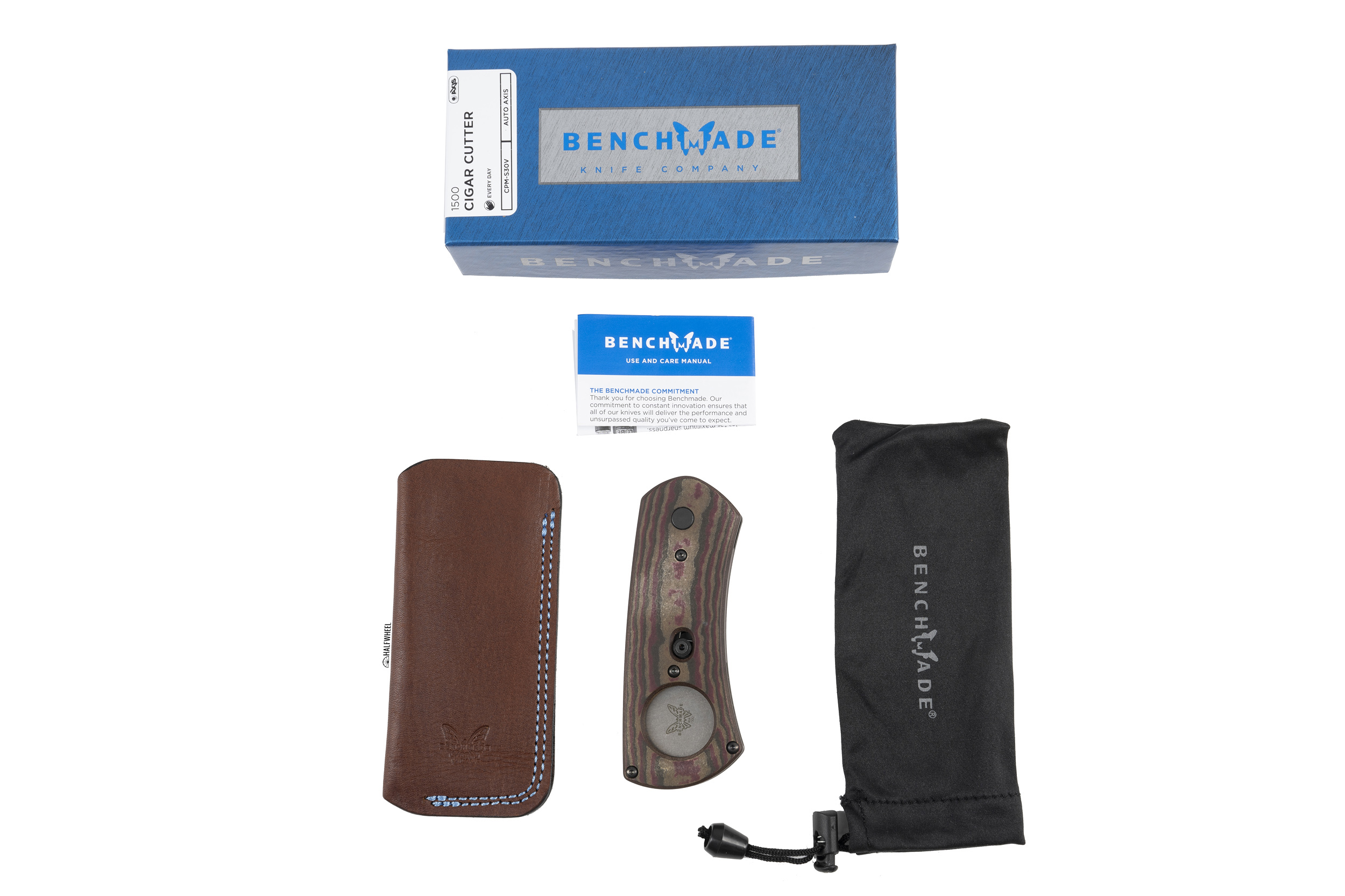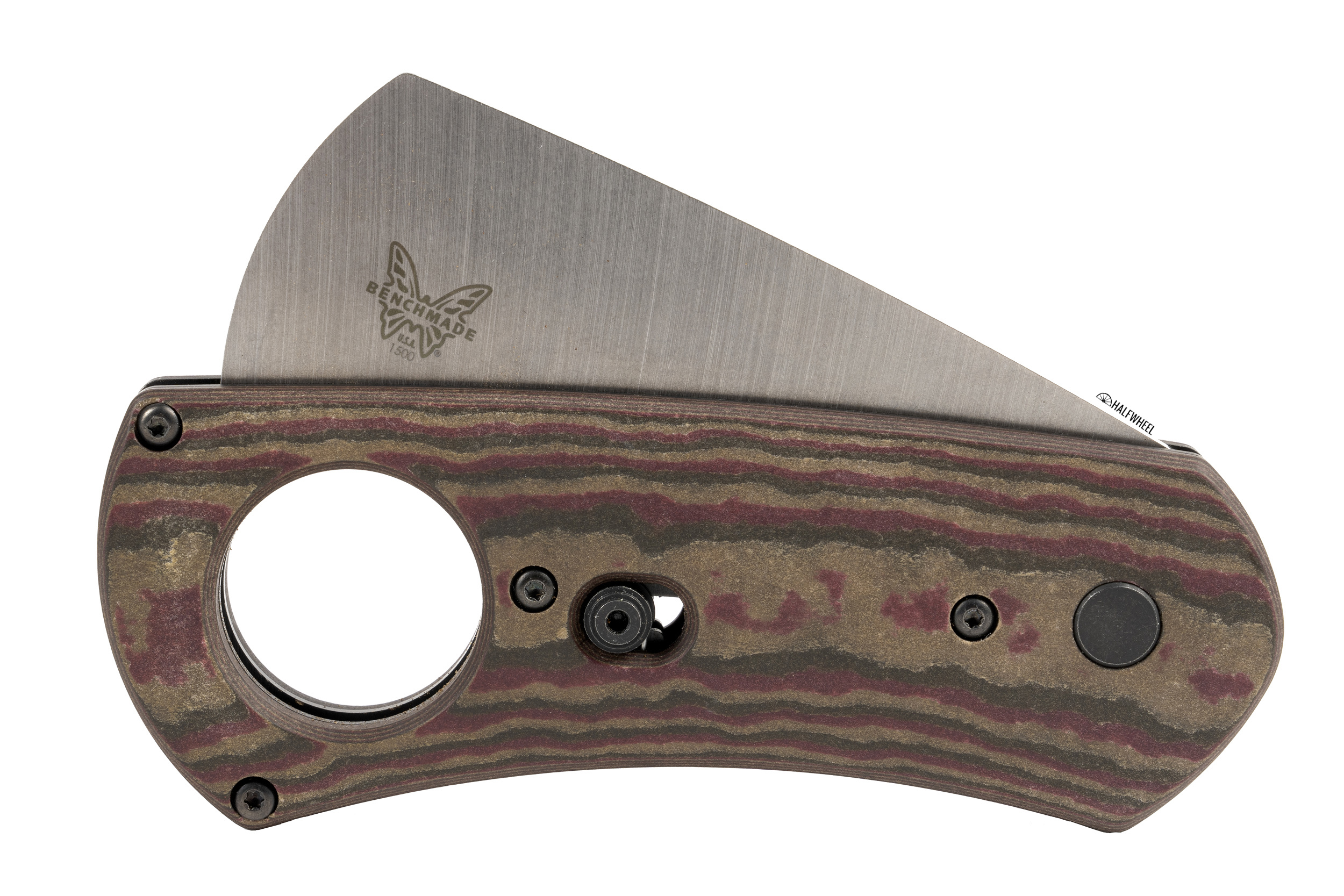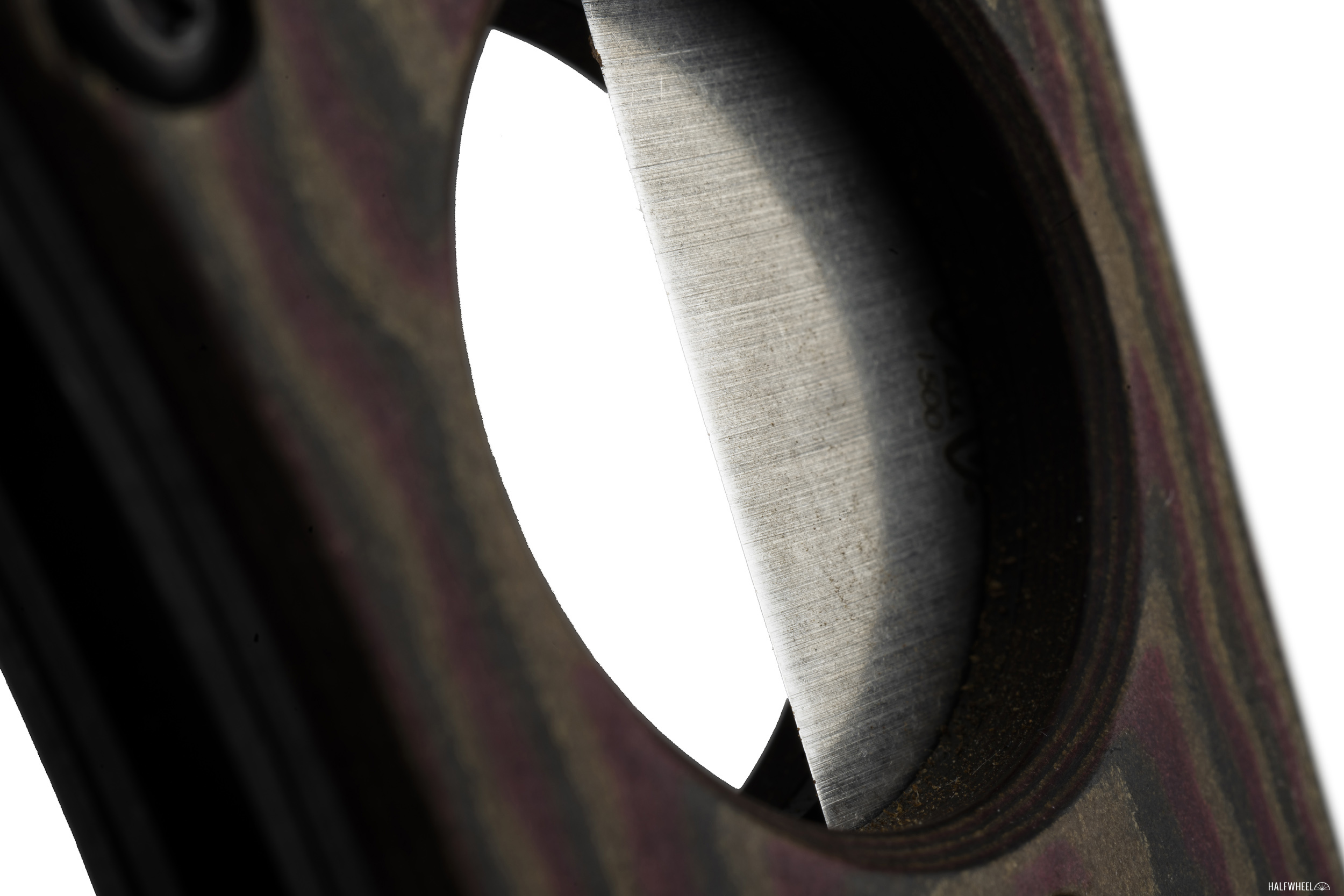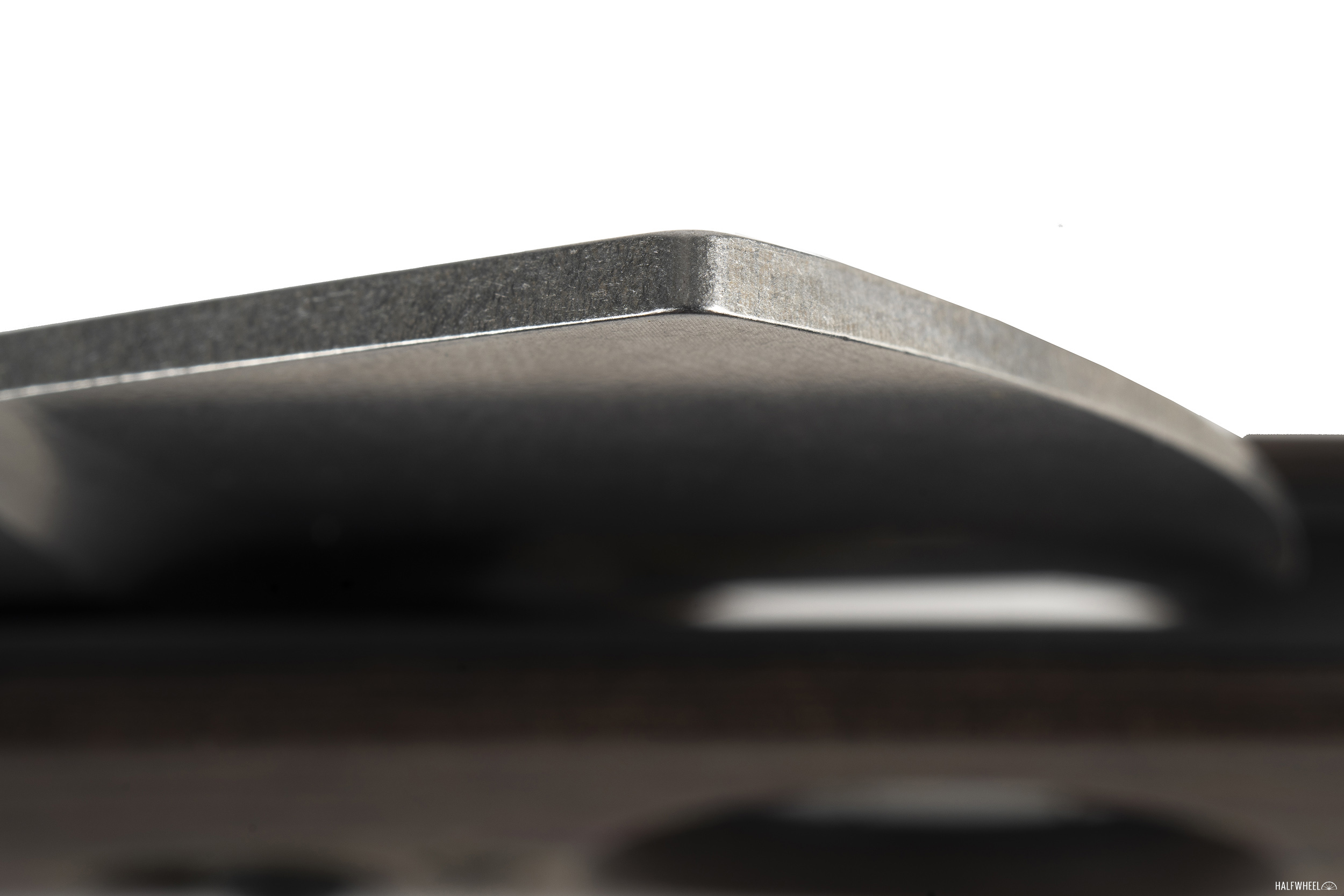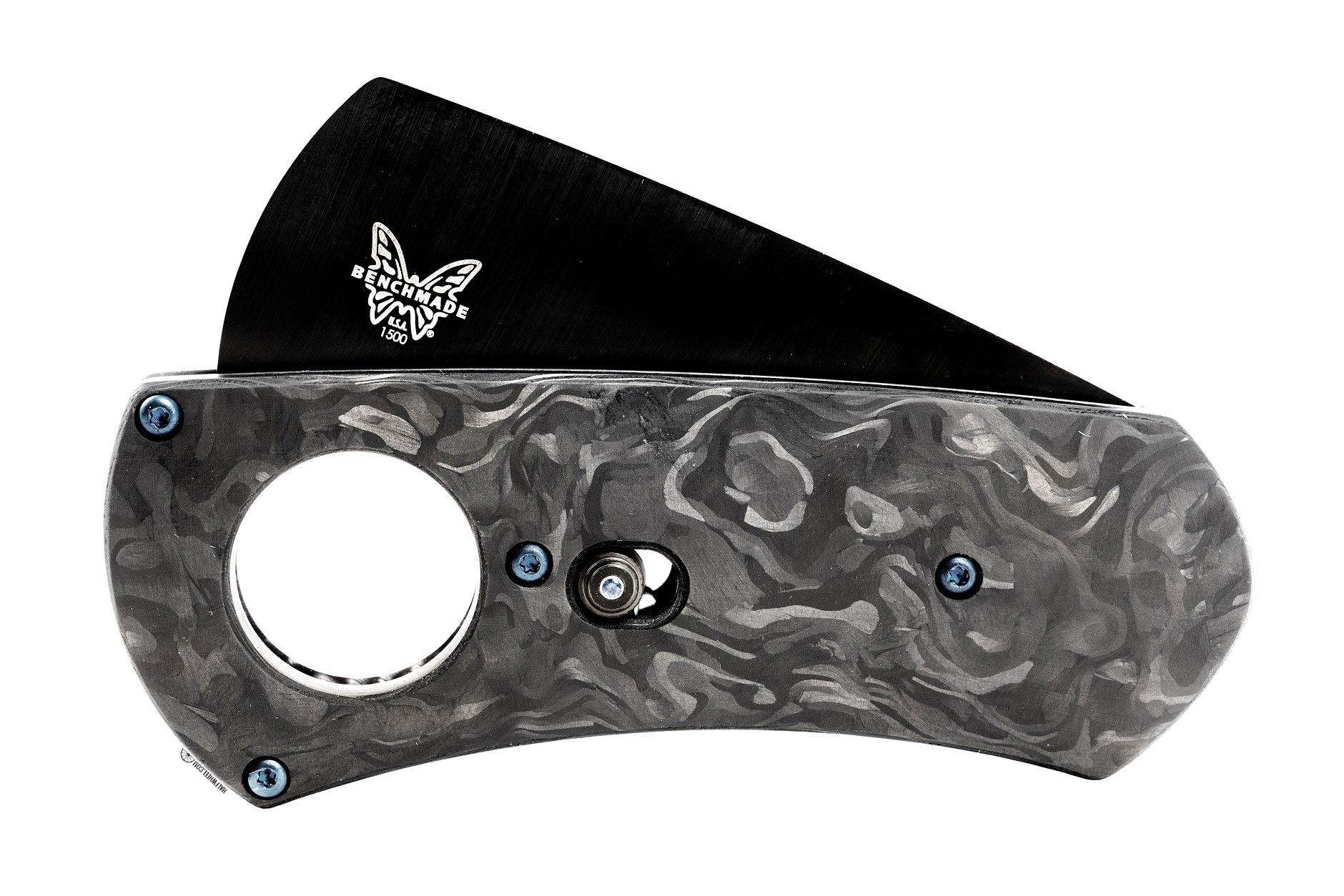In the past two years, a slew of well-known knife makers have been making inroads into the cigar enthusiast market by selling various versions of cigar cutters to their fans. The most notable—and one of the most expensive—was Benchmade Knife Co.’s 1500-181 Cigar Cutter, a single blade guillotine cutter that was released in 2018 priced at $1,000 each and limited to only 250 total units.
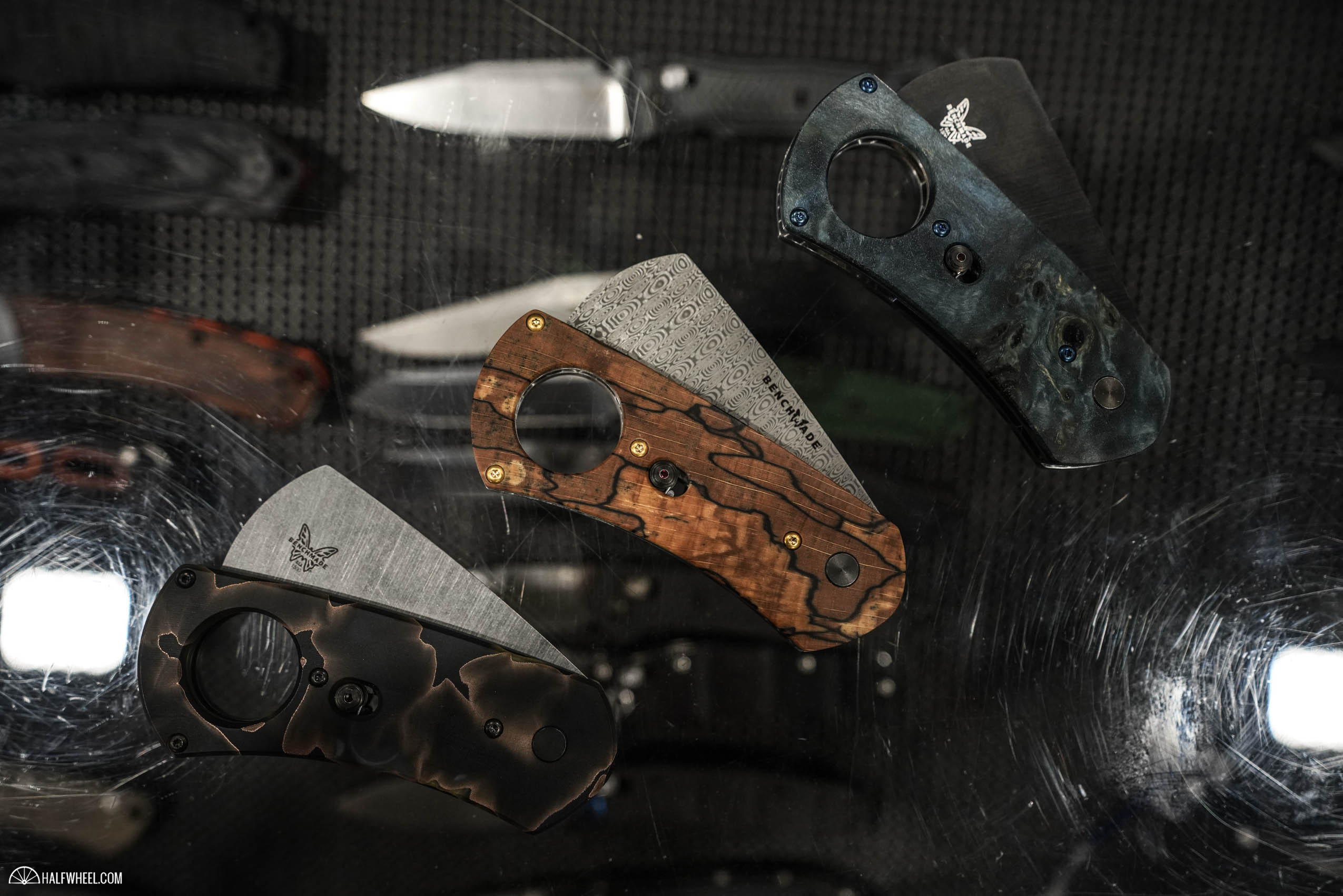
Additional variations followed, all of which were limited and incorporated exotic materials such as Damasteel and other higher-end steels; burl wood handles; and the use of carbon fiber, white gold and sapphires throughout the rest of the cutter. These models were limited editions under Benchmade’s Flagship Gold Class Series and include the 1500-191 ($450), 1500-192 ($900) and 1500-193 ($1,200) and 1500-194 ($1,000).
Fast forward to August of this year, when Benchmade announced a regular production version at a much more affordable price point, the 1500.
WHAT IS IT?
Anyone who has seen or used any of the other Benchmade cigar cutters will find the 1500 to be quite similar, at least in outward appearance. It’s a single-blade cutter where the blade pops open via a button and then you close the blade to cut the cap of a cigar.
The handle is made of Richlite—a material made of resin-infused paper that is water-resistant, sanitary and is both heat and fire resistant—while the blade is composed of CPM-S30V stainless steel with a hardness level of 58-60.
Physically, the cutter measures 4.185 inches long and weighs a total of 3.95 ounces, while the aforementioned blade is kept in place using Benchmade’s AXIS locking mechanism. That mechanism is also used to open and the blade, specifically by pulling back on a small trigger located on either side of the cutter.
According to Benchmade, the blade on the 1500 is 0.09 inches thick and can cut up to 60 ring gauge cigars and the cutter is sold with both a satin pouch as well as a leather sheath.
HOW MUCH DOES IT COST?
$250.
HOW DOES IT WORK?
Basically, the Benchmade 1500 is an amped-up single-blade guillotine cutter. Closed, the blade is almost totally hidden inside of the housing, meaning that the only part you can see is through the opening where the cap goes. However, the simple action of pulling back firmly on one of the triggers located on either side of the cutter causes the blade to pop up firmly, which also opens up the open where the cigar cap is placed.
After that action, you position the cutter in your hand so that the curved base is being supported by your index, middle, ring and pinky fingers, while your thumb is placed on the top of the blade. You then insert the cap of the cigar you are about to smoke into the opening—making sure to judge how much you are going to take off as well as you can—and push down on the blade with your thumb, which causes the blade to pass through the cigar until it hits the end of its journey with a loud click. The cap that was just cut is help in place and the blade stays hidden inside of the handle until you activate the trigger again.
As with a number of other single guillotine blades, when cutting cigars with the Benchmade 1500, you can use it in either your right or left hand, although the process for each hand changes slightly. The key is to always have the cigar facing the same way in relation to the blade so that the cap—i.e., the end that you are cutting off—is facing away from the blade with the beveled edge. The easiest way to tell is the part you want to smoke should be facing the side of the blade with the logo. The part that is going to cut off, should be on the side of the blade that doesn’t have a logo.
In order to use the cutter in your left hand, the process is the same, but the tip of the blade—with your thumb still on the edge—will now be pointed towards you and you will be holding the cigar in your right hand. Making sure the cap end that is being cut is on the same side as the beveled edge of the blade when the cigar is placed in the opening, you then push down with your thumb like before until the blade cuts through the entire cap.

THE GOOD
- Excellent Build Quality — The cutter is extremely well-constructed, extremely well-balanced and—at least for the month I used it—extremely durable.
- Looks Great — It just looks great when you take it out, when you use it, and yes, when you take photographs of it.
- Richlite Handle Took Everything I Threw At It — The handle is quite durable, and shows virtually no signs of wear or anything even coming close to resembling damage, despite the fact that I carried it in my pocket with change, keys and rocks. (My son collects rocks but frequently runs out of room in his own pockets.)
- Made in America — For me, it is always nice to see a product like this made in the U.S.A.
- Lifetime Warranty — As with the rest of the products that Benchmade produces, the 1500 Cigar Cutter comes with a lifetime warranty, which includes sharpening services.
- Easy to Find — The 1500 is a regular production item, so it is not an issue to find one for sale at any number of retailers.
- Price Includes a Very Nice Leather Sheath — I am not a huge fan of sheaths in general, but I am not going to turn one down, especially one as high quality as this one.
THE BAD
- The Cuts Are Good a Lot of the Time, But Not Even Close to All of the Time — As is the case with quite a few of the single guillotine cutters that have been made by knife companies, the combination of the gap in-between the blade and the interior edge of the housing means that almost every time you cut a cap, you are going to be left with a “shelf” of tobacco, regardless of how you try and compensate. There were also fairly common issues with (slightly) damaged wrappers and/or caps, though both were less of a problem than the results I got from the 1500-101.
- It’s Hard to See Exactly How Much of the Cap You Are Removing — Due to the design, the cap of the cigar is significantly obscured as the blade cuts through it, meaning you are basically guessing how far down you are cutting.
- Price — Sure, the 1500 retails for a quarter of the cost of the 1500-101, but it still costs $250, which puts it in the same class as some pretty heavy hitters.
- Difficult to Cut Cigars With Ring Gauge Above 60 — While not impossible, you have very few options when it comes to cutting cigars above 60 ring gauge, and cutting something as big as a 70 ring gauge cigar is almost laughable.


HOW DOES THE BENCHMADE 1500 COMPARE TO THE ORIGINAL BENCHMADE 1500-1801 CUTTER?
Functionally no change, but the updated edge is more effective. There were some complaints about the crushing, not cutting. So the product team revisited the design and found that by moving the point of the edge up against the inner surface of the handle, the slice would be cleaner and more consistent.The previous special edition cutters also used a bias offset (point of the edge is not centered), but this model moved the offset to an even more pronounced position.
- Cuts Are Slightly Cleaner and More Consistent — I was a bit skeptical that there could be much done to curb the number of cutting issues I had with the original, but moving the edge of the blade closer the inner surface of the handle definitely had a positive impact on the results. There were still issues with damaged wrappers and small pieces of tobacco being left, but both happened significantly less often.
- Blade and Handle Made Up of Different Materials — I am not really up to date on my metals and the differences between them, but the original cutter has a blade made of CPM-S90V stainless steel while the newer cutter has a blade made of CPM-S30V stainless steel. In addition, the handle on the 1500 is composed of Richlite compared to the much more attractive—and much more expensive—carbon fiber on the 1500-101.
- Lighter Weight — I would not think that two ounces would make that much of a difference, but I could feel the difference the first time I picked up both cutters at once to compare. While I don’t think that the lighter weight had a significant impact when cutting cigars—both versions are superbly balanced—it was a bit nicer to carry around in my pocket.
- It’s Not as Visually Appealing, But Still Better Than Most Cutters on the Market — Sure, the cheaper price means that you don’t get the cool materials used for the handle, but the Ricote looks very nice on its own and I had no issues at all with it being scratched or damaged in any way.
THE COMPETITION
While there are plenty of other single blade cutters on the market, there are none that I know of that feature the same design as the Benchmade 1500, other than the various variants from the same company. If you are looking for a cutter at around the same $250 price tag, my first choice would be the S.T. Dupont Double Cigar Cutter ($209), which features both a straight cutter and a v-cutter in the same product. However, while both of the cutting options on the S.T. Dupont work significantly better in terms of actually cutting cigars, it does not have quite the same visual appeal that the Benchmade does.
Additional Competitors:
- Benchmade 1500-101 ($1,000) — If you are looking for almost the same design in a cutter, but want it made with more expensive materials resulting in a significant increase in price, you have found it in this option. However, it should be noted that it has more issues cutting cleanly than the 1500.
- Fox Knives 749 Cigar Cutter ($85) — Another single guillotine cutter, but with a price point much lower than the 1500 and a similar visual appeal if you are looking for a very unique looking option. Oh, and it is actually really, really good at cutting cigars.
- Les Fines Lames Cigar Knife ($500) — Yes, this French-made option also has issues cutting cigars cleanly and costs twice as much, but if you are looking for another cigar cutter that looks great on Instagram, this is it. As an added bonus, you can use it as a (very, very sharp) knife.
- Les Fines Lames Le Petit ($149-$14,180) — While not as visually unique as the original Les Fines Lames, this smaller option also costs less, cuts cigars more cleanly, is easier to carry around and is capable of cutting larger ring gauge cigars thanks to its half-circle cigar opening.
- TOPS Knives 208 Clipper Cigar Cutter ($159.95) — A cigar knife that has a number of the same issues cutting caps cleanly, but with a price nearly $100 less while also cutting up to 60 ring gauge cigars. It also has the ability to be used as a knife and also includes a bottle opener built onto the backside of the blade.
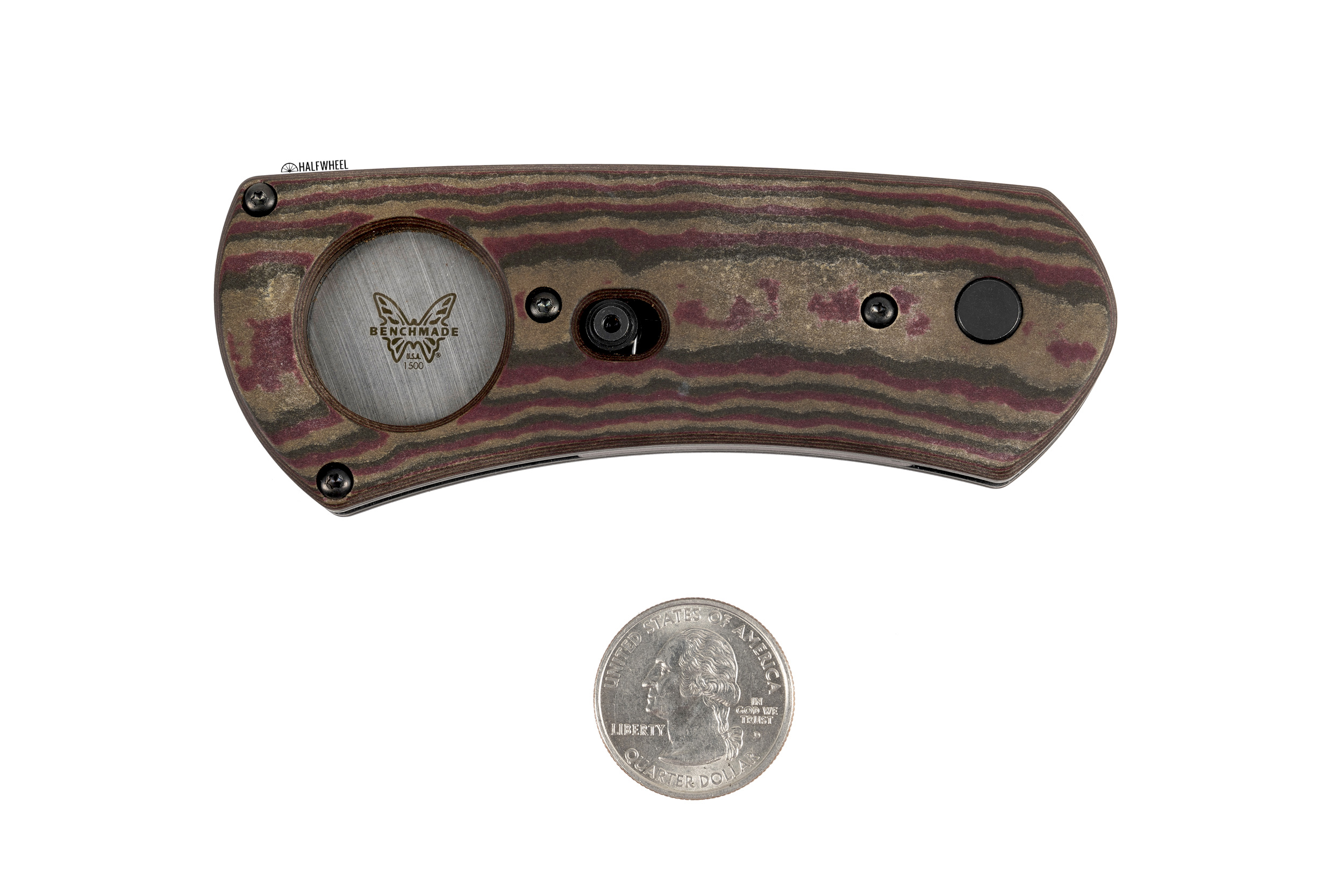
SHOULD YOU BUY IT?
No.
Let’s get this out of the way quickly: the new Benchmade 1500 definitely cures some of the problems I had with the original model, all while keeping a number of the best aspects like the suburb balance and the AXIS locking mechanism. In addition to being lighter, easier to find and significantly less expensive, it also cut caps more cleanly and with more consistency than the 1500-101.
Having said all of that, the cutter still suffers from the same issue: oftentimes when it cuts a cigar it leaves extra pieces of tobacco on the cigar, leaves a shelf of tobacco or causes the wrapper to unravel. There are quite a few things to love about the 1500, but in the end, it still fails in its primary function: to cut the caps off of cigars cleanly and consistently with little to no damage.


